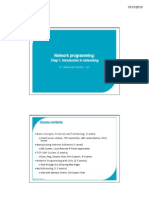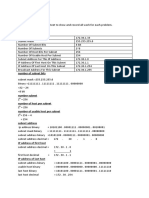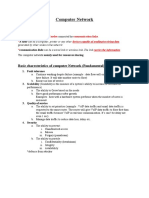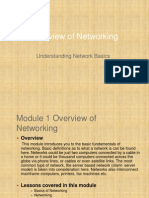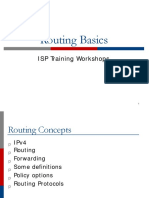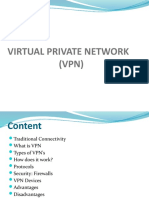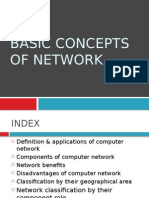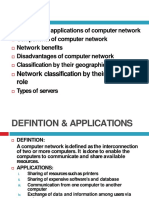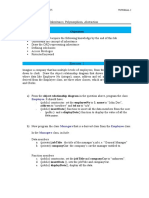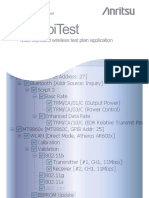0% found this document useful (0 votes)
243 views28 pagesPuter Networks
The document defines a computer network and its basic concepts. It discusses that a computer network interconnects two or more computers to enable communication and sharing of resources. The key components of a network include computers, cables, network interface cards, switches and operating systems. Networks provide benefits like sharing of hardware, software, data and improved communication. They are classified based on their geographical area into LAN, MAN and WAN. Networks can also be classified based on their role into peer-to-peer and client-server networks. Different types of servers like file, print, application and database servers are also explained.
Uploaded by
waleed.khaldCopyright
© © All Rights Reserved
We take content rights seriously. If you suspect this is your content, claim it here.
Available Formats
Download as PPTX, PDF, TXT or read online on Scribd
0% found this document useful (0 votes)
243 views28 pagesPuter Networks
The document defines a computer network and its basic concepts. It discusses that a computer network interconnects two or more computers to enable communication and sharing of resources. The key components of a network include computers, cables, network interface cards, switches and operating systems. Networks provide benefits like sharing of hardware, software, data and improved communication. They are classified based on their geographical area into LAN, MAN and WAN. Networks can also be classified based on their role into peer-to-peer and client-server networks. Different types of servers like file, print, application and database servers are also explained.
Uploaded by
waleed.khaldCopyright
© © All Rights Reserved
We take content rights seriously. If you suspect this is your content, claim it here.
Available Formats
Download as PPTX, PDF, TXT or read online on Scribd
/ 28
